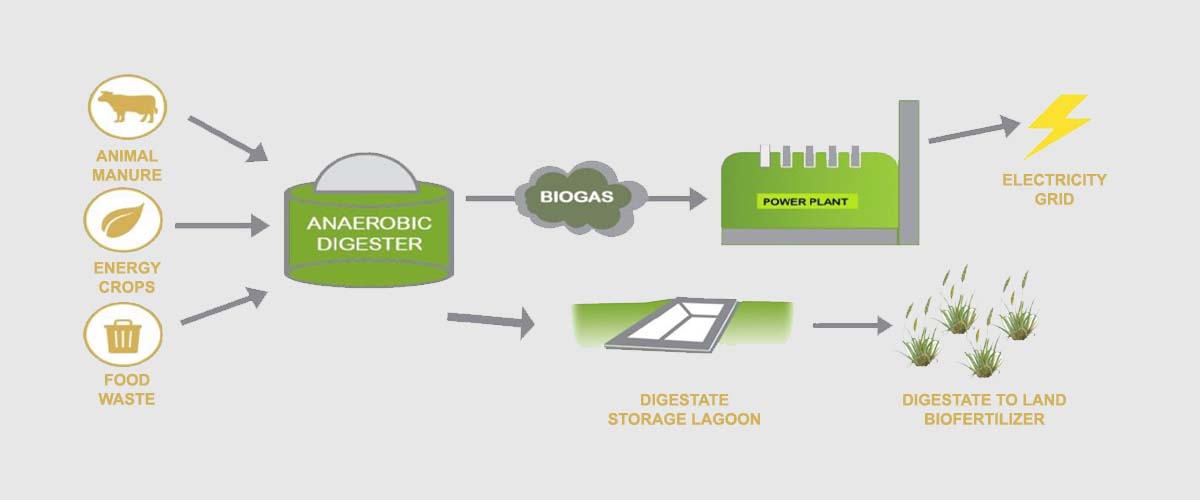
Biogas is a mixture of methane and carbon dioxide. The properties of biogas are similar to the ones of natural gas. Biogas is the common name for the mixture of gases released from anaerobic digestion. Methane is the valuable part of the bio gas. Biogas that contains about 60 to 70 % of CH4 has a calorific value of about 6 kWh/m3 what corresponds to about half an L of diesel oil. contain trace quantities of siloxanes and various volatile organic compounds (VOCs).
Biogas is an environmentally-friendly, renewable energy source. It's produced when organic matter, such as food or animal waste, is broken down by microorganisms in the absence of oxygen, in a process called anaerobic digestion. For this to take place, the waste material needs to be enclosed in an environment where there is no oxygen.
Biogas can occur naturally or as part of an industrial process to intentionally create it as a fuel. A wide variety of waste material breaks down into biogas, including animal manure, municipal rubbish or waste, plant material, food waste or sewage.
If biogas is compressed it can be used as a vehicle fuel. As a replacement for natural gas, if biogas is cleaned up and upgraded to natural gas standards, it's then known as bio methane and can be used in a similar way to methane; this can include for cooking and heating.
When biomass decomposes naturally, or at industrial scale in an anaerobic digester, biogas is produced. Another way to think of the differences is that biomass is the raw material and biogas is the end product.